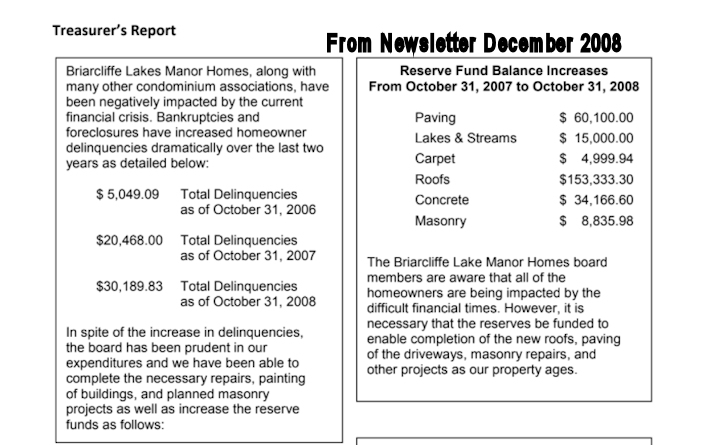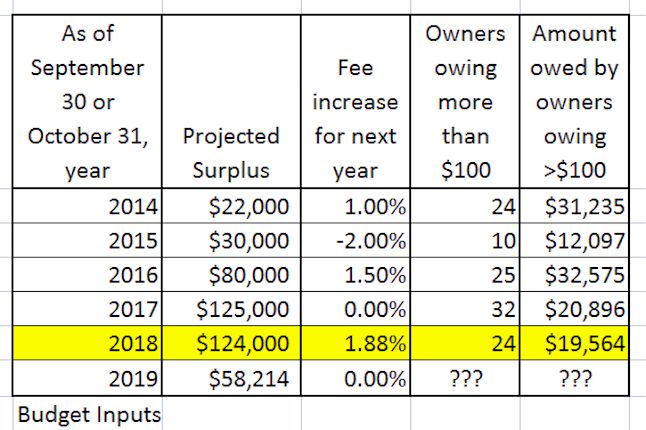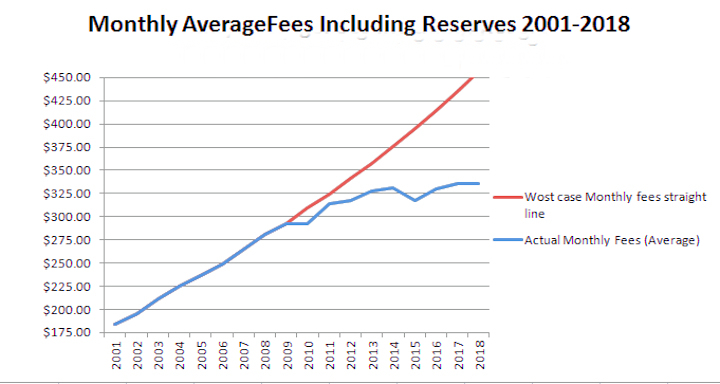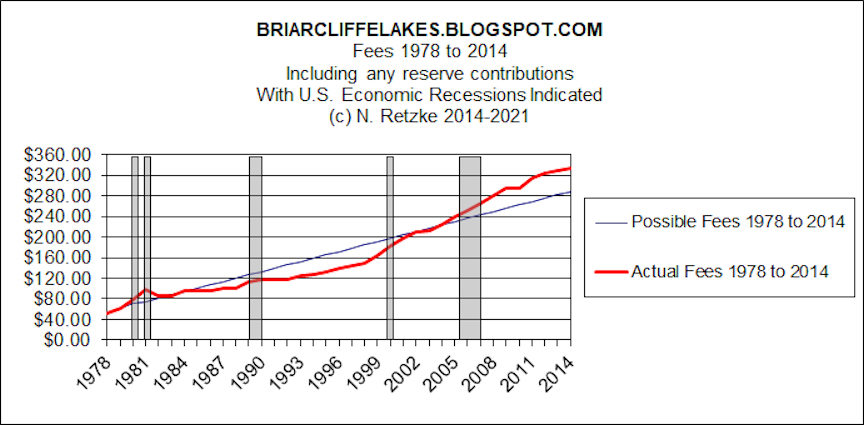When I hear statements by board members or unit owners on this subject, I have concluded that there are several definitions in use here, which go beyond conformity and equality. I also suspect the source of this conversation is an expectation from society at large, and that included BLMH, to conform to and provide, certain services to owners. For example, some unit owners seem to believe that it's unfair if some of us have better fortune than others. But what can and should our association do to promote "fairness?"
I am of the opinion that the source of much of this conversation is about "scarcity" or a condition of scarcity. I'll return to this later in this post. This issue of "fairness" also contributes to some of the problems an association may have with budgeting!
Our attorney made an excellent example of the point of fairness in our association, during an association meeting earlier this year. There is a real difference between "fairness" as it is to be applied in our condo association with various unit owners, and as it is to be applied in social systems. For example, people sometimes say it is "unfair" when illness strikes someone, or death occurs to an individual early in life. However, that type of societal fairness is not appropriate when determining who is to get a new roof, or how fees are levied, etc. in a condominium association.
There are a number of definitions that can be applied here:
According to Princeton Universities Wordnet, fairness is:
- Conformity with rules or standards; "the judge recognized the fairness of my claim".
- Ability to make judgments free from discrimination or dishonesty.
- The attitude of being just to all.
- The property of being fair.
- Achieving the right balance of interests without regard to one's own feelings and without showing favor to any side in a conflict.
- Fairness concerns the equality of opportunity for members of different groups.
The good news is, as a board member, I have read the Illinois condo act, and I also understand the definitions above. The bad news is, some of our board are clueless in this area.
However, returning to "fairness" and how it should be applied, and might be practiced in our or any other condominium association, I'm going to address specific concerns and provide examples.
Levying and collecting fees:
All association members are given the same due dates, and in the event of tardiness in payment, each are given the same consideration and privilege for late payment. Any deviation from this, violates the fairness rules. Our attorney presented a discussion on this topic, when he was asked during an association meeting earlier this year. He stated it is unfair for some unit owners to pay fees and assessments while others are given any leniency or special treatment. The unfairness in this example is simply this: those unit owners who pay their fees in a timely manner are supporting the operation of this association. Tardiness or delay or failure to pay, puts a financial burden on the fees paying citizens of the association. It puts a burden on the rest of the fees paying members.
Implementation of projects:
It is obvious that to achieve a "conformity" requires standards and specifications for projects. Our recent boards through deed and intent have assured unit owners that such standards exist. All fee paying citizens (unit owners) are paying equally for the necessary improvements and day to day operation of the association. That equality is determined by the share of ownership, as determined in the governing documents. Fairness dictates that all projects be applied and distributed equally. In other words, projects such as our roofing project, must be properly evaluated so as to assure that all unit owners are given the same treatment. Why? Because each unit owner pays "equally" based on their ownership percentage. The value of the owner's unit and their investment here, and their future ability to sell their unit in competition with other units for sale at BLMH, is determined by association factors including the quality of their roof, and the other repairs and improvements to the property and specifically to their building and it's immediate environs.
Projects ranging from the installation of carpeting, driveways and larger projects including architectural roofs, or other necessities, must equally improve the value of the properties or buildings. If not, then some unit owners will have improved benefits which they can enjoy. When the time comes to sell a unit, will a building with a new architectural roof and insulation be perceived as a "better" or more desirable building than one without? Of course it will. So there is an obligation on the board, and this association to assure that projects which have begun can be completed in like manner throughout the association without special assessments on future unit owners or significant adjustments to the scope of these projects. Continuing the example, last year the board accelerated the driveway and roofing projects.
That board, and I, now that I am a member, is accountable to assure that funds are in place and sufficient fees collected, at essentially the same rate for the duration of the project, to assure that all roofs and driveways will be completed in a timely manner. Failure to do so, creates sub-groups in the association.
The Schedule and Board Assurances:
In 2009 and 2010, the board assured us that this will occur, and that there is an impartial method for selecting the buildings to be re-roofed. So too for driveways. In 2010 the board accelerated the roofing and driveway projects, and spent a substantial portion of our reserves in the process. To complete these projects, will require additional funds. We can do this two ways. We can increase fees modestly, to assure that each of "us" gets a roof and a driveway. Or, we can delay and charge a special assessment. Delaying affords a few the opportunity to sell their unit(s) and leave the new owners "holding the bag" when the special assessments are levied. Some would say that is "fair." The next time you see a board member, I suggest you ask them about "fairness" as they use it. You might be surprised by the answer!
Scarcity:
Scarcity is a condition of insufficiency. If you observe some of the board, and unit owners, you will come to the conclusion that their motivation is about a lack of abundance. They believe, or intend to create, a situation in which there will be insufficient funds to do the necessary projects here at BLMH. Most notably, the roofs and driveways. If owners press to keep fees low, they will succeed in creating an insufficiency.
Now, that's a game I am not interested in playing. However, I am in a silent majority here at BLMH. I have concluded, after watching and listening, that there are some owners who truly believe there are insufficient funds and/or will press the board to keep fees sufficiently low to assure that. In such a situation, what should an owner who is "playing the game" do to assure that his property is upgraded before the funds run out? Well, you make friends with the board, complain incessantly, tell them how it is that you really need that roof, etc. and then let their mores do the work.
I have a different perspective. Do the math, and determine how much money is needed to do all of the driveways and roofs, and then structure the budget to see that the necessary funds are available when needed. In such a situation, there is no scarcity, and each and every owner is a winner. So that is what I intend to do. However, I'll need your help.
Comments, Corrections, Omissions, References
Note 1. Principles of Fairness and Justice
The most fundamental principle of justice, accepted for more than two thousand years, is the principle "equals should be treated equally and unequals unequally." This has been interpreted in contemporary society this way: "Individuals should be treated the same, unless they differ in ways that are relevant to the situation in which they are involved." In the work place, that means that if two workers perform the same work, and there are no relevant differences between them and the work they are doing, then justice demands that they be paid identically. This is not about circumstance; it is about equality with no circumstance. However in society we expand the notion of "justice" and "fairness." It is considered "just" if government gives benefits to needy citizens which are not available to the wealthy or affluent. It is considered "fair" for parents to give their children more attention and care than they would to other children. It is considered "fair" that the first in line be admitted to a movie or event ahead of other equals. These are examples of special criteria called "need, merit, contribution, and effort." These justify different treatment in society. However, in our association these notions do not apply. All unit owners are to be treated equally in accordance with the Illinois Condominium Act.
You might find this link interesting:
http://www.scu.edu/ethics/practicing/decision/justice.html
Note 2: I find it somewhat ironic, that after all this talk about "fairness" that we have a board majority that literally gets "tied in knots" when attempting to manage the rules. If you read the definitions in this post, it would seem that rules enforcement is a very straightforward matter. For example, fairness as a "Conformity with rules or standards." So what definition of fairness is some of our board using? It might be useful if unit owners were told this. I have asked simple questions such as "Are you, or are you not, in favor of special assessments." I know where our treasurer stands, because he has put his position in writing, Not a single board member, in response to a written request from me, has volunteered to tell me what their position is in this matter. Isn't that odd?
Note 3: Continuing the question of "Who is, or is not" in favor of special assessments. I had the opportunity to have a private conversation with our Architectural Director, and I took the opportunity to ask his position about "special assessments." He told me that he is opposed to them. So that's four remaining, who have not volunteered this information. I will ask them again.





















